The Big Read: Malaysia’s brain drain to Singapore – winners and losers in the long run not so clear-cut
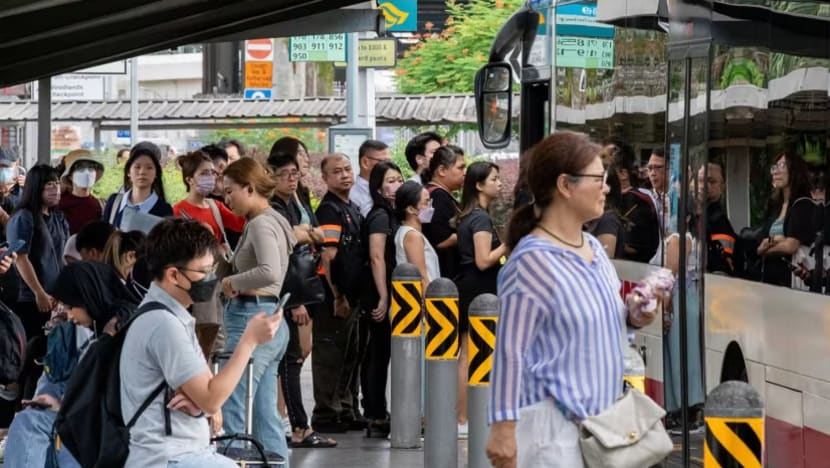
- Many Malaysians relocate to work in Singapore for better opportunities, higher salaries and advantageous exchange rates
- The Malaysian government recently released an official study into Malaysians living in Singapore and warned of the “adverse effects” of the brain drain as skilled workers leave Malaysia
- Economists and experts told TODAY that Malaysia’s talent exodus has not reached a dire level yet, but if left unchecked, could eventually hamper its economic growth and development
- This would also not be in Singapore’s interest, given how closely intertwined both countries’ economies are
- Malaysian workers whom TODAY spoke to said Malaysia must address political stability and the pay gap as well as invest in infrastructure to encourage its diaspora to return
And so, like many of her fellow compatriots with big dreams, the Malaysian started considering looking southwards: Singapore.
“I got hold of an opportunity from a recruiter, which made me contemplate whether moving to Singapore would be a good decision,” she told TODAY.
“Since Singapore and Malaysia have similar cultures, food and languages, I thought it would be nice to have the opportunity to work overseas but in a place that doesn’t feel too different from home.”
Ms Chin, who holds a bachelor’s degree in science, thought she could benefit from the regional experience. She had expected to stay in Singapore for just a few years and then head home.
Fast forward to six years later, the 33-year-old medical sales executive is now a Singapore permanent resident, happily married to a Singaporean, and is looking for a flat as her forever home here.
Considering how her life had taken an unexpected turn since she uprooted herself, Ms Chin said she plans to have children and settle down in Singapore for good.
“After moving, I feel less connected to home. I miss my family. It’s a little sad that I am the only one missing out on important events and gatherings like Chinese New Year and birthdays,” she said.
“But my life is here now, and to the Chinese, it’s customary to follow and stay with your husband’s side of the family.”
Ms Chin has three siblings, aged 31, 45 and 48, all still living in their hometown of Ipoh.
Ms Chin’s experience will surely resonate with the Malaysian diaspora residing and working in Singapore.
Take Ms Audrey Yeap, for example. The 30-year-old, who works as a senior executive in branch operations at a local bank, married a Singaporean citizen after working and living in Singapore for seven years.
The Ipoh native moved to the Lion City in 2016 right after graduating from university, having no prior work experience in Malaysia other than a three-month internship in Kuala Lumpur.
“When I was just a kid, my parents took me to Singapore for the holidays. Back then, I didn’t know anything about the currency exchange rate or the strength of the dollar,” she told TODAY.
“All I knew was a PlayStation Portable cost about S$200 then, but in Malaysia, it was around RM800. I only understood figures, and thought it would be great to live in a place where I didn’t have to pay so much for things I wanted.”
As she grew older, Ms Yeap eventually realised that earning Singapore dollars would mean increased spending power, thus reinforcing her belief that Singapore was an attractive country to relocate to.
Conversely, Malaysian technology start-up founder Joshua Lee (not his real name), 40, had never considered moving to Singapore all his life. Still, he found himself mulling over it after being offered the role of chief technology officer at a local firm more than two years ago.
“My business was affected after COVID-19, and I had to make a decision to protect the well-being of my staff,” said Mr Lee, who declined to be named.
“So when a Singaporean boss offered to buy my company and relocate me to work for him in the Singapore office while retaining all 13 workers to work from home in Malaysia, I accepted it.”
Last year, Malaysia’s then human resources minister V Sivakumar, said that as of 2022, 1.13 million out of 1.86 million Malaysians who migrated abroad were living in Singapore.
While Singapore alone absorbs over 60 per cent of Malaysia’s diaspora, most of the remainder reside in countries located on the other side of the world, such as the United Kingdom and the United States.
Ms Anna Lim, 32, is one of them. Now based in California, she said that many of her friends had left Malaysia for Singapore in search of better pay and opportunities.
“Even growing up, I was encouraged to find work elsewhere, such as Singapore or China. Also, I am interested in game development and the entertainment industry, and I am more likely to find a high-paying job in those industries in the US than in Malaysia,” she said
“Malaysia still does not value the arts in the way it should, even though many game studios are based there. Unfortunately, money talks.”
Before being retrenched recently, Ms Lim, who hails from Penang, was a data analyst at a television technology company in San Francisco.
Although many young, bright Malaysians grow up under their home country’s education system, they may harbour dreams and aspirations that cannot be fulfilled at home. Hence, countries as near as Singapore and as far as the US become talent magnets.
But what does this mean for Malaysia if a significant proportion of its young, skilled labour force seeks long-term work outside of the country with the possibility of permanent relocation?
A Malaysia governmental study in 2022, released last week, revealed that more than half of the Malaysian diaspora in Singapore have tertiary-level qualifications.
Of those employed here, nearly three in four, or 74 per cent, are skilled and semi-skilled workers.
A media statement released by the Malaysian authorities about the study warned of the “adverse effects” of the brain drain as skilled workers leave the country.
TODAY looks at the broader implications of this talent outflow on Malaysia’s workforce and economy, and how this may adversely impact Singapore if the phenomenon continues on a greater scale.
SEEKING GREENER PASTURES IN SINGAPORE
Malaysians working in Singapore and Brunei are generally attracted by good job prospects, stable employment, attractive salaries and an advantageous exchange rate, according to the Malaysian government study released on Feb 19.It was conducted by the Department of Statistics Malaysia, an agency under the Prime Minister’s Department, and the Ministry of Economy.

On career planning, 62 per cent of the Malaysian diaspora in Singapore polled said they would continue working abroad, while the remainder voted for “no” or “not sure”.
The study also found that most Malaysians tend to work in Singapore for at least three years, with 33.2 per cent staying for three to five years.
Meanwhile, 48.4 per cent have stayed here for six years or more, and 3 per cent have migrated.
More than two-thirds of those living and working here earn a gross salary of S$1,500 to S$3,599 (US$1,115 to US$2,675) a month.
However, the study did not indicate the total number of Malaysians surveyed.
Ms Ashlyn Ong, 32, has braved the daily commute between Johor Bahru and Singapore for over six years for the sake of enjoying higher spending power thanks to the strong Singapore dollar.
“When I left, the exchange rate (of S$1 to ringgit) was around 2.9 or 3.0. Now, it’s at 3.5 and rising,” she said.
“Earning RM2,500 (US$525) and S$2,500 is completely different. You can buy a lot more things with S$2,500, but with RM2,500, it’s easily spent with no savings left.”
Although she resigned from her position as a customer service officer in Singapore in January to take a break from the toll of the gruelling daily commute, Ms Ong told TODAY that she would still look for another job in Singapore once she is ready to get back to the grind.
Ipoh-based beautician Tracey Tan, 33, decided to move to Singapore with her husband in 2018 to work shortly after giving birth to her son.
With a combined household income of around RM5,000 then, the couple needed more savings to ensure they could comfortably bring up their child.
In Singapore, she was hired for the same job as a beautician, while her husband was hired as a cook, and they collectively earned around S$5,000.
“We were so fortunate that we decided to come home in January 2020, right before COVID-19, because our son needed to be ferried to kindergarten, and his nanny didn’t know how to drive,” she said.
Ms Tan, who now lives and works in Ipoh, said she cherished the opportunity of working in Singapore because she could save a lot more in ringgit after converting her Singapore dollar savings.
“If I didn’t have a kid, I would have probably continued working in Singapore because I can get more savings faster and achieve my dream of bringing my whole family for an overseas trip together,” she said.
Singapore’s safety and reliable public transport were also pull factors for Ms Yeap, the bank employee.
“I love how safe Singapore is. It is also easy to commute everywhere. When I had just arrived here, I could rent a room near my workplace, so commuting to work was a breeze,” she said.
“(During) my internship experience in Kuala Lumpur before graduation, I had to endure a 1.5-hour jam to get to work and then another 1.5 hours to get home.”
For engineer Jonathan Lim, besides Singapore’s strong currency, working abroad has always been on his bucket list and Singapore is a good starting point.
The 27-year-old Kuala Lumpur native said: “I also think I should explore more at my younger age, before having significant commitments such as family and mortgage in Malaysia.”
Mr G Peremkumar, 32, a senior staff nurse at a private hospital, said he moved to Singapore almost 10 years ago seeking exposure to a better healthcare system.
“The Singapore healthcare system is completely different (from Malaysia), especially in terms of patient experience and patient care,” said the Penang native who worked for over two years as a nurse in Malaysia.
“Compared to my experience back in Malaysia, where I didn't think I was learning from the best practices, I get to grow and learn a lot more from the people here who have higher, stricter standards.”
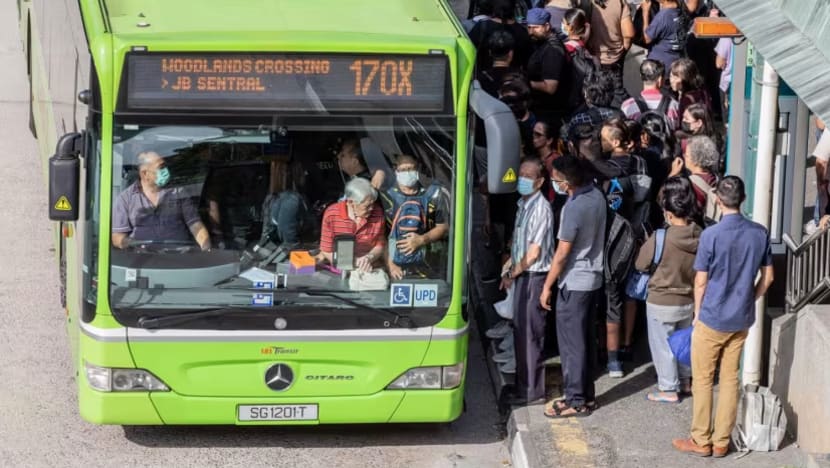
BRAIN DRAIN’S LONG-TERM IMPACT
With Singapore being the preferred work destination for Malaysians looking to work abroad, Malaysia’s chief statistician Mohd Uzir Mahidin said in his statement accompanying the study that the country needs a shift in perspective to address the brain drain.He said it is bound to have an adverse financial effect, considering that a significant portion of those employed abroad had received their education in Malaysia.
“Malaysia must reframe the narrative around brain drain, transforming it into a positive concept known as ‘brain circulation’,” he said
“This shift in perspective means that the Malaysian diaspora will eventually return to Malaysia after a predetermined period, thereby contributing their acquired expertise and experiences back to the country.”
Dr Mohd Uzir also said the Malaysian government needs to adopt a holistic approach – extending beyond the confines of government ministries and agencies – to leverage the “brain circulation” concept as a strategy.
He emphasised that efforts should not just focus on bringing Malaysians back to their home country, but also on utilising their skills to benefit Malaysia while ensuring their well-being upon their return.
“The ability to reshape the Malaysian labour market will not only bolster the economy but will also, in the long term, exert an indirect influence on factors such as the Malaysian ringgit currency rate wage levels, and advancements in automation and industrial mechanisation.”
Malaysian Prime Minister Anwar Ibrahim, in addressing the brain drain issue last September, said that his administration was looking into ways to attract skilled Malaysians to return and contribute to the country.
“Top scholars, top economists, top accountants are leaving (the country) or have left, so now we have to make sure that we have a system that could encourage them to come back with the incentives,” he said during a visit to New York.
Malaysian and Singaporean economists whom TODAY spoke to said that Malaysia’s brain drain has not reached a dire level yet, but the effects would still be felt in the long term.
If left unchecked, the continuous loss of talent would eventually hamper economic growth.
Sunway University economics professor Yeah Kim Leng said the outflow to Singapore had not adversely affected Malaysia’s labour market, given the existing slack.
According to the Department of Statistics Malaysia, there were 187,800 unemployed graduates at the end of 2022, a decrease of 5.5 per cent from the previous year.
The graduate unemployment rate was 3.7 per cent, which, according to Dr Yeah, was “marginally lower” than the overall unemployment rate of 3.9 per cent in 2022.
“The rise in labour force participation rate, both overall and for graduates – together with the present level of unemployment – suggests that the country’s manpower needs are being met,” he said.
Dr Yeah said Malaysia’s current “brain drain” may not be as bad as that experienced during the 1970s and 1980s due to its labour surplus.“It is nevertheless concerning as the outflow of talents could dent the country’s structural upgrading to a higher value, innovation-driven and knowledge-based economy,” he said.
“In the longer term, the loss of talents could hamper the country’s aspiration to be an advanced and high-income nation.”
Dr Yeah, who is one of the five advisers to Malaysia’s Ministry of Finance, added that if not for the loss of human capital, the nation “could well have become developed and achieved high-income status a decade or two earlier”.
Associate Professor Alwyn Lim, from the Singapore Management University (SMU), echoed Dr Yeah’s sentiments, saying that Malaysia’s population is “large enough” to mitigate any economic impact from migrating skilled workers.
Malaysia has an estimated population of 33.7 million, compared with Singapore’s 5.92 million.
“In that sense, I do not see an economic impact large enough to slow down co-prosperity efforts,” he said, referring to Singapore’s and Malaysia’s economies’ co-dependence.
Assoc Prof Lim, however, noted that the economic contributions of nearly a million Malaysian workers are not insignificant.
“Many workers in Malaysia can perform lower-skilled work, so the more concerning trend would be higher-skilled Malaysians who choose to work in Singapore, or elsewhere, whose skills cannot be easily replaced and whose value contributions to the economy may be higher,” he said.
“Higher-skilled Malaysian migration will probably continue to increase, and this will be a limitation for those domestic sectors in Malaysia that rely on the value contribution of higher-skilled Malaysians.”
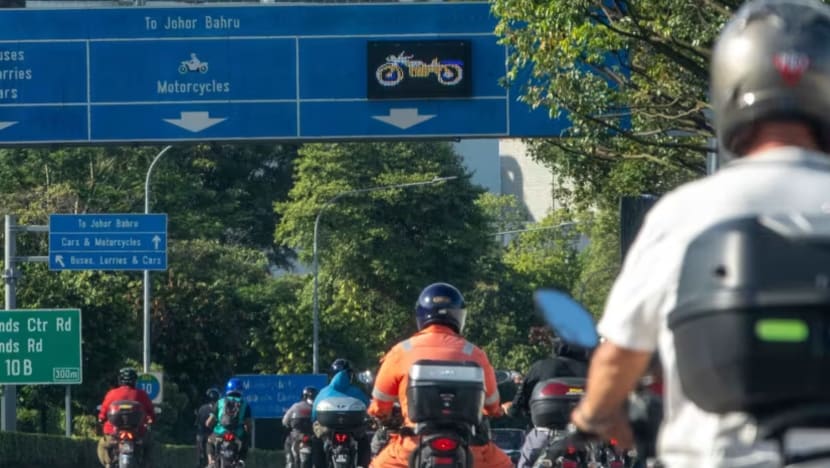
WHY MALAYSIAN WORKERS ARE IN HIGH DEMAND
While many of Malaysia’s skilled and semi-skilled workers are eager to seek their fortunes abroad, they are also much sought after by employers in Singapore grappling with rising costs and manpower shortage.Mr Clement Tan, director of Malaysia recruitment agency Talent Recruit, said while he serves clients from various sectors looking to hire Malaysians, healthcare and education stand out in terms of demand.
“Cost is the main priority from the clients’ side. Secondly, they feel that Singaporeans can be rather choosy, making it challenging for them to hire Singaporeans, especially for lower-level positions such as operator, retail worker and kitchen worker,” he said.
Mr Jim Wee, director of Singapore-based recruitment firm Nala Employment, said most of his clients would start considering Malaysian candidates for the job if they are unable to hire locally after a month.
As the firm specialises in hiring Malaysians, around 90 per cent of its clients, mostly from the manufacturing, engineering and hospitality sectors, would approach the firm looking for these workers.
“Malaysian candidates are often considered the next-best alternative to other nationalities due to the culture and language, which are the closest to Singapore,” said Mr Wee.
"The hiring process is quicker for Malaysian candidates, as they can attend face-to-face interviews within a few days if shortlisted.”
While it is widely believed that foreign workers are cheaper, Mr Hazmi Zin, a third-generation owner of Rumah Makan Minang restaurant, disputed this, saying it costs about the same for him to hire a local and a foreigner.
Malaysians currently make up one-third of his business’ 40 workers.
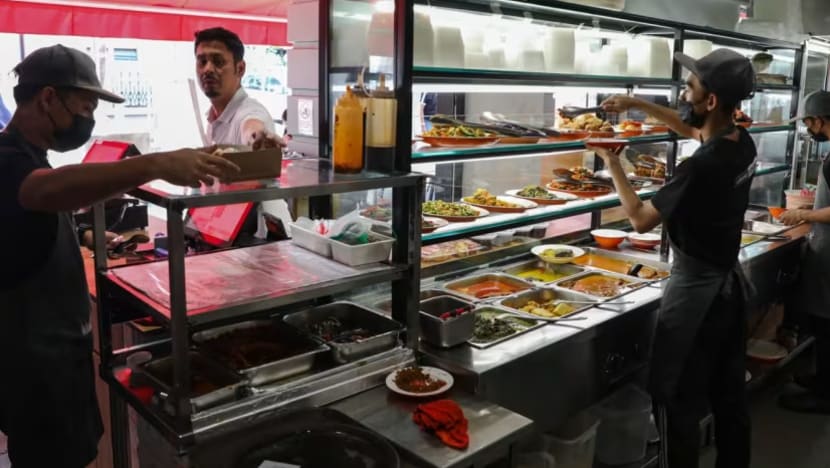
“For Malaysian work permit holders, the basic salary is around S$1,500, with additional earnings from overtime work. We also need to consider levies, which range from S$350 to S$800, depending on their educational background,” he said.
The foreign worker levy is a pricing mechanism to regulate the number of foreigners in Singapore. Employers must pay a monthly levy for work permit holders.
Besides the monthly pay, Mr Hazmi also provides lodging, which costs S$500 to S$600 a month per person. In total, a single foreign worker would cost nearly S$3,000 to hire.
In comparison, local workers are paid between S$2,000 and S$2,400, excluding Central Provident Fund contributions.
Having relied on Malaysian workers for years, Mr Hazmi said their turnover rate can be high because they would go home once they have worked for a couple of years and hit their savings targets.
“When given a choice, I would prefer to hire local workers, but because of the nature of the job, it is difficult to operate solely with locals,” he said.
The hairdressing industry in Singapore faces similar struggles. Chez Vous salon chief director Serene Tan said while they prioritise Singaporeans in the hiring process, they have no choice but to recruit workers from Malaysia due to a lack of local talent.
“Many salons actively seek out locals with hairdressing experience, offering higher pay and benefits to attract them. However, the hairdressing industry is not favoured by Singaporeans, despite offering competitive pay compared to graduates,” she told TODAY.
Ms Tan attributed the lack of interest to several factors, such as low starting pay, weekend work and irregular hours. “Many also perceive the profession of a hairdresser as lower-skilled, or it is for those who ‘cannot study’,” she said.
Agreeing with Mr Hazmi on the pay issue, Ms Tan said hiring Malaysian workers is not necessarily cheaper due to the foreign worker levies. “In some cases, hiring Malaysians with higher education levels may incur higher costs than hiring locals,” she said.
With the rise of remote working, some Singaporean employers look to hire Malaysians to support operations without having to move here.
Mr Keith Tan, founder and chief executive officer of Crown Digital, the tech start-up behind Singapore’s first robot barista Ella, is one such example.
Explaining his decision, he said hiring in Singapore can be highly challenging due to a limited pool of tech talents who seek “premium” salaries upon graduation.
“A fresh graduate from (Nanyang Technology University) demanded a pay of S$6,500. The high labour cost in Singapore makes business operations unsustainable, as workers often seek substantial pay increases after a year,” he said.
“I am looking to Malaysia because of a larger talent pool that does not come at a ‘premium’ cost.”
Asked about Malaysia’s brain drain impact on Singapore, Assoc Prof Lim of SMU said the economic migration is largely positive as the country's falling birth rate means it requires more workers from abroad to sustain or accelerate its economy.
“There will, however, be increased competition for that stratum of jobs that Malaysians seek in Singapore. Hopefully, this will encourage Singapore workers to add more value to their services or move up the skills ladder,” he said.
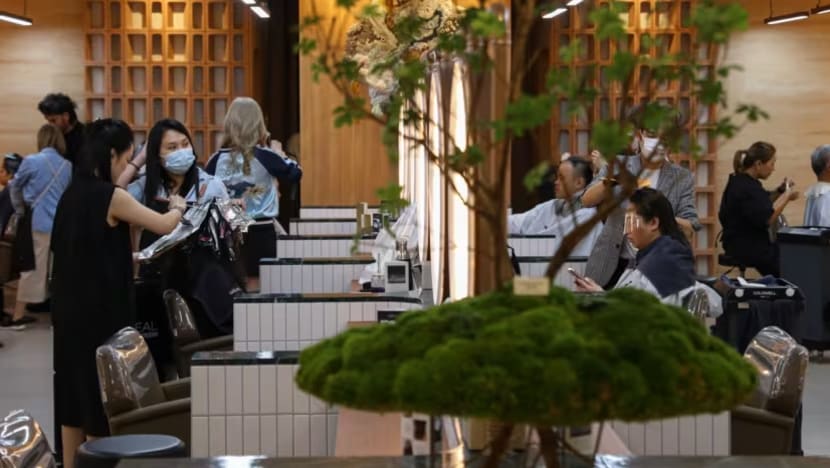
While Singapore seems to be reaping the economic benefits from Malaysia’s flow of skilled and semi-skilled talent into the country, economists also told TODAY that not everything would be rosy in the long run as the two will need each other to do well in order to thrive.
Associate Professor Walter Theseira from the Singapore University of Social Sciences said that with the two economies closely intertwined, the success of one economy often mirrors the success of the other.
“Take, for instance, firms headquartered in Singapore that conduct operations in Malaysia. A weak Malaysian economy could directly impact their profitability,” he said.
“Moreover, as Singapore often serves as a regional hub for business services, any setbacks in Southeast Asian growth diminish its allure as an investment destination. We naturally prefer to see our neighbouring economy thrive, as any slowdown could indicate underlying issues with economic management or structural challenges.”
Similarly, Mr Song Seng Wun, an economic adviser at financial service provider CGS International, said that due to the strong intra-regional trade in the Association of Southeast Asian Nations (ASEAN) region and Singapore’s heavy reliance on external trade, any external shock would quickly impact its economy.
ASEAN comprises Singapore, Malaysia, Indonesia, Vietnam, Laos, Brunei, Thailand, Myanmar, the Philippines and Cambodia.
Hence, he said there is a mutual dependency among ASEAN countries.
“Currently, regional growth is resulting in higher-income jobs, increased disposable income, and greater demand for services. This growth fosters intra-regional trade and spillover effects,” he said.
“To Singapore, it is especially important. We want everyone to do well, so they can spend a few hundred dollars here to go to the Taylor Swift concert, for example.”
HOW CAN MALAYSIA ATTRACT CITIZENS TO RETURN?
With all that has been said and done about Malaysia’s brain drain, the question remains: What will it take for the Malaysian diaspora to feel incentivised to return home and contribute to their country’s economy?Audit associate Phua Jia Herl, 25, who has worked in Singapore for almost two years, said Malaysia must first fix its political issues.
“If the political parties keep arguing with one another, it shows we are politically unstable. How can we attract foreign investments if that were the case?”
The Kuala Lumpur native also stressed that political parties should refrain from exploiting racial issues and move past racial politics.
“(Some politicians) often propagate negative videos on platforms like TikTok, inciting hatred towards other racial groups. This divisive behaviour may deter some Malaysians like myself from coming back,” he said.
He expressed hope that Malaysia could invest more in infrastructure, such as the rail network, as it would stimulate the economy and bring significant benefits.
Mr Lim, the engineer working in Singapore, said there is a need for the authorities to invest not only in infrastructure but also in public services and amenities to improve the overall quality of life in Malaysia.
“In the long run, when it comes to the family planning stage, returnees will also look for healthcare facilities for their parents, education systems for future generations and reliable transportation networks, all of which play important roles in their lives.”
Mr Fahad Naeem, country director at recruitment agency Randstad Malaysia, said that when it comes to talent attraction and retention, government initiatives and employer efforts must go hand-in-hand.
He said this is especially important after COVID-19, with governments around the world introducing new talent attraction schemes to draw top global talent to work in their countries.
“These initiatives help enhance the overall strength of their local workforce and fill the talent pool gap. However, these initiatives must be complemented with attractive career opportunities that companies in Malaysia can offer,” he said.
“Besides matching salary expectations, many talents are looking for employers that can offer positive employee experiences.”
Mr Fahad cited his company’s Employer Brand Research 2023 findings, which found that non-monetary benefits are important to 87 per cent of respondents.
He noted that the top non-monetary benefits Malaysians look for are flexible work arrangements, being able to forge good working relationships with their managers and colleagues, and having more autonomy at work.
Conversely, Dr Lee Hwok Aun, senior fellow and co-coordinator of the Malaysia Studies Programme at Singapore's Iseas-Yusof Ishak Institute, said reducing the pay gap is paramount.
“Malaysians residing in Singapore and working in semi-skilled and low-skilled jobs can be attracted to return to Malaysia, but it will be a challenge and requires further study,” he said.
“But I would hypothesise that the job offerings may not be very different across the countries – noting the main semi-skilled occupations in the (Malaysian) study are clerical service work, machine operators and service and sales workers – and hence earnings differential is the main factor.”
While economic factors such as higher salaries, higher spending power and better job opportunities prompted her to move to the other side of the world, San Francisco-based Ms Lim said one of the reasons she moved to the US was also due to her sexuality.
“I am bisexual and married to a woman. Personally, until attitudes towards LGBTQ people change, I don't think I'll be able to return. I would prefer to stay in a country where my marriage is acknowledged,” Ms Lim said, using the acronym for the lesbian, gay, bisexual, transgender and queer community.
“Outside of that, money and attitudes towards the arts would potentially sway me to come back – and a nice, heaping plate of char kway teow.”
This article was originally published in TODAY.
